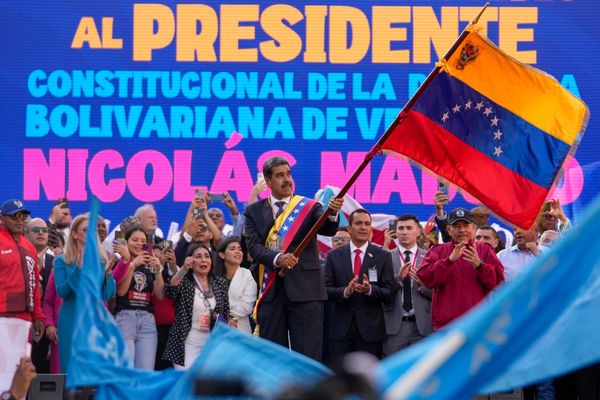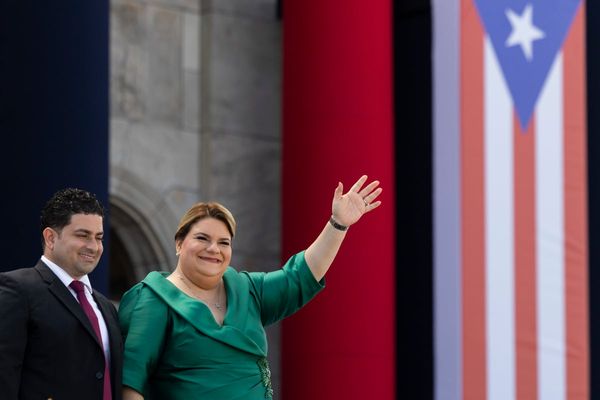
U.S. President Joe Biden’s waiver of patent protections for U.S.-made COVID-19 drugs and vaccines is a historic milestone and a moral imperative. It is also an overdue acknowledgement of recent experiences. Contrary to prognostications from the pharmaceutical sector that side-stepping the Trade-Related Aspects of Intellectual Property Rights (TRIPS) component of the World Trade Organization (WTO) will mark the death knell of the drug industry, the world’s response to HIV/AIDS long ago demonstrated that patents stymie accessible treatment, cost lives, and offer little bona fide enhancement of innovation. There are challenges that lie ahead—but harm to pharmaceutical companies or future patients who will rely on their productivity do not count among them.
Consider what happened in the years after 1996, when a consortium of pharmaceutical companies took the unprecedented step of sharing their HIV/AIDS treatment data and manufacturing, resulting in a collaboration that was the turning point for what had been a catastrophically grim pandemic. By working together, the companies demonstrated that any one anti-HIV/AIDS drug, taken as monotherapy, would fail, possibly even hasten the pace of the disease process. But when taken in combinations of three or four drugs, made by usually rival companies, the antiviral assault was so powerful that people bounced back from the edge of death like the Biblical Lazarus who was resurrected by Jesus.
As millions of HIV positive people living in wealthy countries switched overnight from planning their funerals to building up retirement accounts, the miracle of combination antiviral therapy was denied to millions more living with AIDS in sub-Saharan Africa and other poorer regions. A battle unfolded, pitting a reluctant—even obstinate—pharmaceutical industry against AIDS activists, physicians, and political leaders from developing countries. In 2002, former U.S. President Bill Clinton intervened, using his bully pulpit in consultation with a team of academic experts convened by his philanthropic foundation to contrive a tech-transfer scheme that had Western pharmaceutical companies provide their patented drug formulas to Indian generic manufacturing companies, ultimately bringing down annual treatment costs from nearly $10,000 to less than $100.
Far from bringing chaos to the pharmaceutical industry and stifling innovation, the Clinton Foundation’s maneuver around the strict enforcement of intellectual property laws ushered in a dramatic era of HIV drug invention that improved the antiviral power of treatment, lowered drug side effects, developed new drug forms that are now taken to prevent infection, increased options for pediatric care, and greatly improved the methods for which HIV positive individuals could take their life-sparing treatments. Despite the loss of guaranteed patent protection and pressure to transfer technology to, primarily, Indian pharmaceutical companies, wealthy nations’ drug companies have profited and continue to innovate on the HIV/AIDS front.
Of the multiple COVID-19 vaccines currently in use, the most promising—the mRNA and adenovirus vector products—all arose from government-funded research, mostly based in academic research centers. AstraZeneca’s vaccine, for example, grew out of the United Kingdom’s government-back research and development at Oxford University. The Moderna and Pfizer mRNA vaccines grew out of years of National Institutes of Health-funded research in the United States and with predecessor Ebola vaccines in the Democratic Republic of the Congo, Guinea, Sierra Leone, and Liberia. China’s vaccine built on years of military immunization work.
And thanks to Operation Warp Speed, many companies involved in the vaccine chain of production have benefited with a total of $18 billion of U.S. government subsidies. The speed and scale of COVID-19 vaccine production in the United States is largely thanks to the country’s taxpayers. This week, Pfizer reported earning $3.5 billion in profits during the first quarter of this year from its COVID-19 vaccine. Moderna earned the first profits the fledgling company has ever seen—$1.73 billion—and projects nearly $20 billion in earnings this year. Despite setbacks, both the AstraZeneca and Johnson & Johnson adenovirus vector vaccines are making handy profits, projected to each garner multiple billions of dollars this year. Even Sinopharm from China and Gamaleya from Russia expect to reap ample profits in 2021, both in cash and diplomacy, as they sell vaccines directly to key governments. The Novavax company, which makes a not-yet-approved protein vaccine, expects massive earnings in late 2021.
Despite the threat of patent-voiding, all of these companies—as well as a long list of would-be vaccine makers further back in the research and development pipeline—have continued to innovate, trying to find formulations that can battle variant strains of the virus; be stored at room temperature; and get administered via skin patches, orally, or in a nasal mist. The creativity at these companies continues—and there’s no reason to think it will stop anytime soon.
It remains to be seen how many countries with big pharmaceutical industries will follow the Biden administration’s lead in liberalizing patent protections for COVID-19-related vaccines and drugs. The WTO operates by consensus from member states, so the United States can’t unilaterally alter the global landscape. But Ngozi Okonjo-Iweala, the new WTO director-general, is already raising the heat. A former Nigerian minister of finance, ex-World Bank official, and the first African and woman to hold the coveted World Trade Organization position, Okonjo-Iweala made it clear from her first day in office that a TRIPS-waiver for COVID-19-related products was her top priority.
But even if one assumes the European Union, U.K. Prime Minister Boris Johnson, Japanese Prime Minister Yoshihide Suga, and Swiss President Guy Parmelin will adopt Biden’s example, waiving patent protections on their COVID-19 products, the next challenges will be far more difficult. Adar Poonawalla, CEO of India’s Serum Institute, the world’s largest vaccine manufacturer, has complained that his company’s production facilities are already overwhelmed filling orders for generic AstraZeneca and other COVID-19 vaccines—orders places by countries other than India. The Modi government, Poonawalla said, placed a paltry order for just 15 million doses of a generic version of AstraZeneca’s vaccine in January, supplemented by an April order for 110 million doses—a drop in the bucket for a nation of more than 1.3 billion people needing a two-dose vaccine. (Poonawalla’s statements riled Modi supporters, and Poonawalla fled the country this week, staying “indefinitely” in London.)
The vaccines aren’t easy to make. Manufacturing errors in a Maryland Emergent BioSolutions factory caused an 86 percent plummet in Johnson & Johnson vaccine supplies in early April. Complex steps in the process of isolating, purifying, preserving, storing, and delivering COVID-19 immunizations are each error-prone and require long lists of specialized chemicals and machinery.
The world is in the grips now of pipette tips shortages—used to suck out chemicals and viral samples from test tubes in key steps of vaccine making. Syringes are in short supply, prompting vaccinators to toss vaccine supplies for lack of means to administer them. The sterile containers used to hold vaccines are running out. From the earliest days of the 2020 pandemic, the sorts of protective gear and machinery vaccine researchers and makers require have been in short supply, exacerbated by trade tensions between the United States and China. Swabs used for COVID-19 testing and all aspects of equipment cleaning in sterile conditions are held up in a grotesque family dispute in Maine. There aren’t enough centrifuge tubes made worldwide to spin down cell samples. Moderna and Pfizer are constantly scrambling to find the ingredients used to make the microscopic fatty balls, called liposomes, that house the mRNA molecules and carry them safely into the bloodstream. Even the nucleic acids used to construct mRNA and a long list of special enzymes used to purify those samples are in horribly short supply, largely because their use overlaps with the manufacture of COVID-19 tests. Because such delicate chemicals and proteins must be handled at deep-freeze temperatures and transported swiftly for immediate use, the entire supply chain is vulnerable to the simplest of catastrophes: weather at an airport, a car crash that blocks truck traffic, power outages, or competition for cargo space.
Although waiving TRIPS requirements on COVID-19 vaccines is a spectacular, historic gesture, would-be generic makers worldwide will soon discover their efforts are stymied not by patents but for want of Avanti Polar Lipids’ liposome ingredients, Flexsafe RM special bags to hold liquid vaccines in bulk, phosphate-buffered saline solution, Distearoylphosphatidylcholine for liposome-making, 5’ cap for mRNA made by TriLink BioTechnologies, RNA polymerases—the list goes on, and on, and on. As the number of would-be vaccine makers grows, so will demand for thousands of such items, putting pressure on companies that are, in many cases, mom-and-pop operations. Worse, pressure on supplies critical for COVID-19 vaccine making is already resulting in a production loss of vital medicines for other diseases.
Oxygen, after all, is ubiquitous, unpatented, free to all—unless it is needed in pure form, in a pressurized tank, or for ventilation use by a critically ill COVID-19 patient in Pune, India. On June 24, the World Health Organization held a press conference in Geneva merely to plead for help obtaining 14,000 oxygen concentrators to generate 620,000 cubic meters of oxygen per day, just for India.
Scaling up vaccine production to produce enough doses to fully immunize more than 7.8 billion people will require a level of international coordination and cooperation never previously seen. Knocking down patent barriers on the final vaccine formulations is a start, but that’s all that it is.







